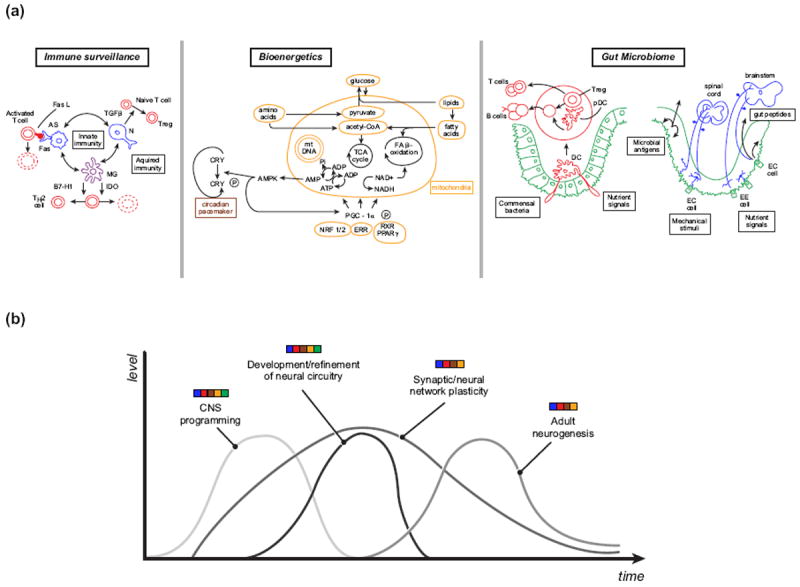Figure 2. Complex temporal and spatial profiles of brain-systemic crosstalk encompass interrelated components of immune surveillance, bioenergetics and the gut microbiome.

(a) Immune surveillance: astrocytes (AS, blue), microglia (MG, purple) and neurons (N, blue) are components of the innate immune system of the brain (blue, purple) that modulate acquired immune responses (red) by promoting death of activated T cells through Fas/Fas ligand (FasL) interactions, death or conversion of T cells to TH2 cells through indoleamine 2, 3-dioxygenase (IDO) biochemical reactions and co-inhibitory ligand (B7-H1) mediated actions, respectively, and/or conversion of naïve T cells to T regulatory cells (Tregs) through transforming growth factor-β (TGF-β) signaling. Bioenergetics: Within the complex cellular ecosystem of mitochondria (yellow), amino acids, glucose and lipids are metabolized directly and via metabolic intermediates through the tricarboxylic (TCA) cycle and the fatty acid (FA) β-oxidation cascade. NAD+/NADH are involved in mediating a spectrum of interrelated processes including energy homeostasis and immunological functions. Reducing equivalents generated by the Krebs cycle and by the β-oxidation pathway are subsequently shuttled through the electron transport chain to generate energy through a tripartite series of energy-generating and - conserving reactions. Within this energy cascade, adenosine monophosphate (AMP) gives rise to AMP-activated protein kinase (AMPK) and this factor, in turn, phosphorylates and activates both peroxisome proliferation-activated receptor gamma co-activation-1-beta (PGC-1α) and cryptochrome (CRY), thereby linking components of mitochondrial biogenesis (mitochondrial DNA [mtDNA]) and function, through the mediation of specific co-factors (nuclear respiratory factor ½ [NRF1/2], estrogen-related receptor [ERR], retinoid X receptor [RXR], peroxisome proliferation-activated receptor gamma [PPARγ]), with the circadian pacemaker (brown), respectively. Gut microbiome: Within the gastrointestinal system (green), immunological (red), endocrine and neuronal afferent signals respond to commensal bacteria and infectious pathogens, nutrient signals and gut-associated stimuli and these cues are transmitted to the peripheral and central nervous systems (blue) and non-neural organ systems. Dendritic cells (DC) sample commensal bacteria and nutrient signals through luminal sensing and convey their signals to adjacent Peyer’s patches where associated dendritic cells (pDC), B cells and Tregs interact to generate appropriate degrees of tolerance and protective immunological reactions that are disseminated through humoral mechanisms. Specific forms of gut-associated signals are conveyed through spinal afferents and extrinsic vagus afferents to spinal cord and brainstem regions. Multimodal gastrointestinal cues can activate networks of enteric, myenteric, spinal and vagal afferent nervous system elements. A spectrum of diverse immune-associated molecules, feeding peptides, neuropeptides and additional hormonal cues are released by immune cells within Peyer’s patches and the gut epithelium to activate corresponding receptors on spinal and vagal afferents and related signals are also released from enteroendocrine cells (EE cells) in response to luminal antigens, toxins and nutrients through humoral/circumferential organ and receptor-mediated paracrine mechanisms, respectively. Moreover, enterochromaffin (EC cells) convey complementary gut-related signals to enteric nervous system circuits and via vagal efferents to the brainstem. (b) Representation of how the levels of key nervous system processes dynamically evolve over time and are mediated by the interplay of signals (color bars) derived not only from brain (blue) but also from immune surveillance (red), bioenergetic (yellow) and circadian (brown) processes and diverse gut-associated cues (green).
